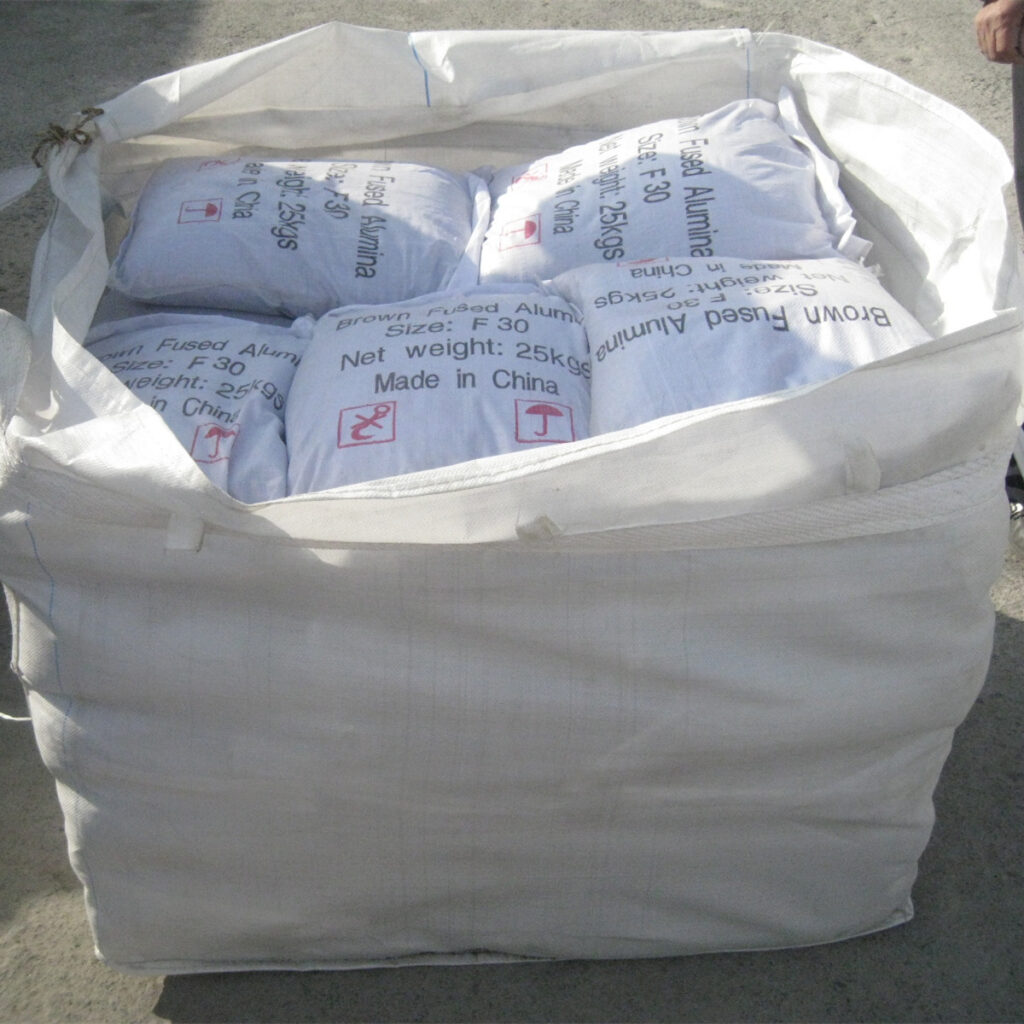Overview of Brown Fused Alumina
Brown Fused Alumina is a man-made abrasive produced by melting bauxite (an aluminum ore) in an electric arc furnace at extremely high temperatures. Its primary chemical component is aluminum oxide (Al₂O₃), which gives it exceptional hardness and durability.
| Chemical Properties (% wt) | Item | Typical | Min | Max |
| Al2O3 | 95.50 | 95.50 | 96.00 | |
| Fe2O3 | 0.15 | – | 0.30 | |
| SiO2 | 0.88 | – | 1.20 | |
| TiO2 | 2.70 | 2.50 | 3.20 | |
| Physical Properties(% wt) | Magnetics | 0.03 | – | 0.05 |
| Moisture | 0.05 | – | 0.20 | |
| Hardness | 2090 Knoop | 9 Mohs | – | |
| Grain form | Angular-cubic | |||
| Bulk density g/cm3 | 3.94 | 3.90 | – | |
| Grit sizes | A full range of size from # 10 to # 320 TO ANSI,ISO and FEPA specifications | |||
| Packing | In 1,000-1,500 kilos super sacks,or 25 kilos paper bags Special quantity packaging and labeling available. | |||
Key Advantages in Blasting Applications
1. Exceptional Hardness and Fast Cutting Action
Moh’s Hardness of 9.0: BFA is one of the hardest blasting abrasives available, second only to materials like silicon carbide. This gives it a very aggressive and fast cutting action.
High Efficiency: It quickly removes tough surface contaminants like mill scale, heavy rust, old coatings, and weld slag, significantly reducing project time compared to softer abrasives.
2. High Durability and Reusability
Low Breakdown Rate: BFA grains are very tough and fracture in a controlled way, maintaining their cutting efficiency over multiple cycles.
Cost-Effective in the Long Run: While the initial purchase price is higher than some alternatives (like coal slag), its ability to be reused 5 to 15 times (depending on blast pressure and equipment) makes it highly economical for large-scale or continuous operations.
Consistent Profile: It provides a more uniform surface profile throughout its lifespan because the particles do not break down into fine dust immediately.
3. Low Silica Content and Chemical Inertness (SAFETY)
Free-Silica Free: Unlike natural abrasives like quartz sand, BFA contains no measurable free silica. This eliminates the risk of silicosis, a serious and potentially fatal lung disease, making it a much safer choice for operators.
Chemically Inert: It is a neutral material that will not contaminate the blasted surface with salts or other soluble contaminants. This ensures a perfectly clean, “white metal” or “near-white metal” surface (SSPC-SP 5/SP 10 or Sa 3/Sa 2.5) ideal for high-performance coating systems.
4. Superior Surface Preparation Quality
Optimal Anchor Profile: Its sharp, blocky grain shape creates a clean, sharp, and uniform anchor pattern on the substrate. This is critical for the mechanical adhesion of paints, coatings, and linings, ensuring they last longer.
Peening Effect: The toughness of the particles can also induce a beneficial compressive stress layer on metal surfaces, which can help improve fatigue resistance.
5. Versatility
Wide Range of Applications: It is suitable for blasting a variety of materials, including high-tensile strength steel, stainless steel, aluminum, and non-metallics like stone and composite materials.
Multiple Equipment Compatibility: It works effectively in both pressure blast (most efficient) and suction blast systems.
Various Sizes Available: It can be graded into a wide range of grit sizes (e.g., #16, #20, #36, #60, #80), making it suitable for everything from aggressive stripping to finer cosmetic finishing and peening.
6. Environmental and Operational Benefits
Reduced Dust Generation: Its durability means it creates less fine dust during blasting compared to brittle abrasives. This improves visibility, reduces material consumption, and lowers the load on dust collection systems.
Recyclable: In closed-loop blast rooms/recycling systems, its reusability minimizes waste disposal costs and environmental impact.


